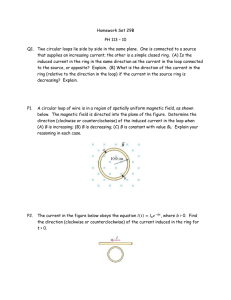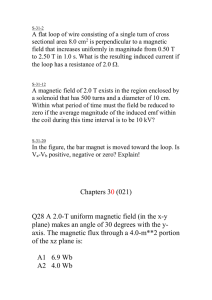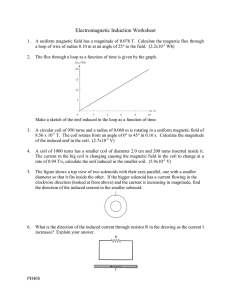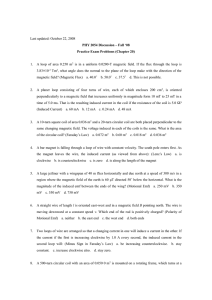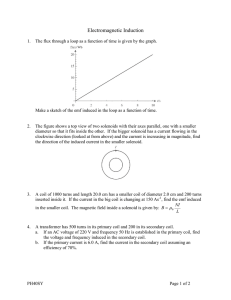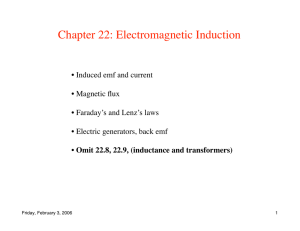Homework Set 29A PH 113 – 10
advertisement
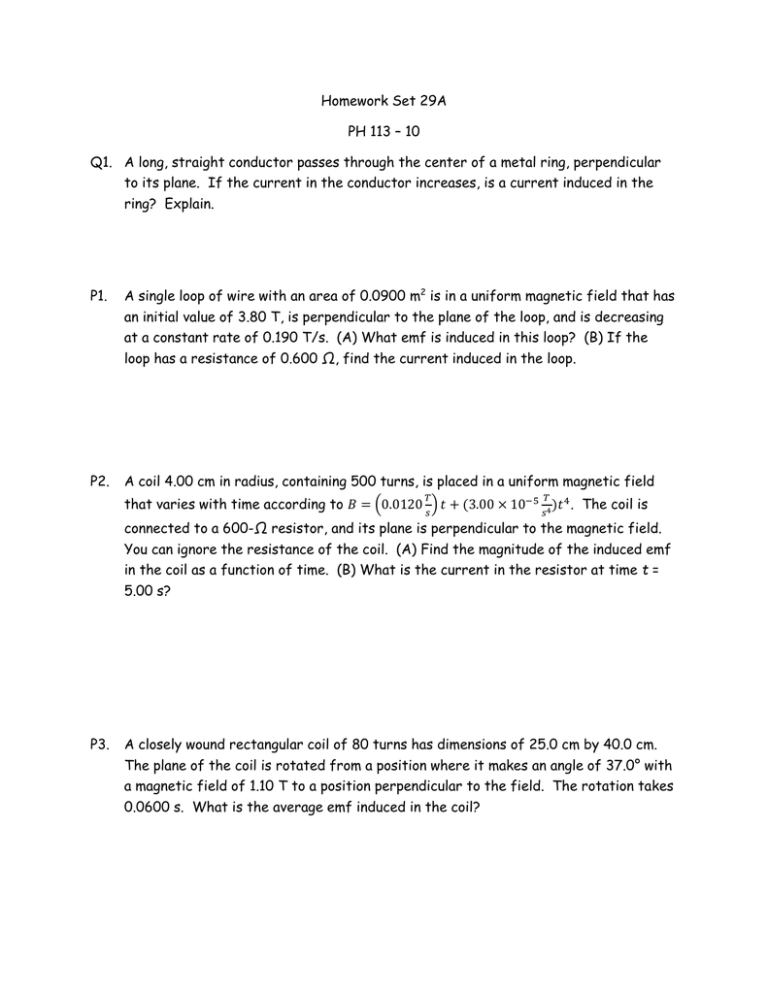
Homework Set 29A PH 113 – 10 Q1. A long, straight conductor passes through the center of a metal ring, perpendicular to its plane. If the current in the conductor increases, is a current induced in the ring? Explain. P1. A single loop of wire with an area of 0.0900 m2 is in a uniform magnetic field that has an initial value of 3.80 T, is perpendicular to the plane of the loop, and is decreasing at a constant rate of 0.190 T/s. (A) What emf is induced in this loop? (B) If the loop has a resistance of 0.600 Ω, find the current induced in the loop. P2. A coil 4.00 cm in radius, containing 500 turns, is placed in a uniform magnetic field 𝑇 𝑠 𝑇 𝑠 that varies with time according to 𝐵 = (0.0120 ) 𝑡 + (3.00 × 10−5 4 )𝑡 4 . The coil is connected to a 600-Ω resistor, and its plane is perpendicular to the magnetic field. You can ignore the resistance of the coil. (A) Find the magnitude of the induced emf in the coil as a function of time. (B) What is the current in the resistor at time t = 5.00 s? P3. A closely wound rectangular coil of 80 turns has dimensions of 25.0 cm by 40.0 cm. The plane of the coil is rotated from a position where it makes an angle of 37.0° with a magnetic field of 1.10 T to a position perpendicular to the field. The rotation takes 0.0600 s. What is the average emf induced in the coil? P4. The conducting rod ab shown in the figure below sits on top of a conductor and is able to slide with negligible friction on the conductor. The apparatus is in a uniform magnetic field of 0.800 T, perpendicular to the plane of the figure. (A) Find the magnitude of the emf induced in the rod when it is moving toward the right with a speed of 7.50 m/s. (B) In what direction does the current flow in the rod? (C) If the resistance of the circuit is 1.50 Ω (assumed to be constant), find the force (magnitude and direction) required to keep the rod moving to the right with a constant speed of 7.50 m/s. (D) Compare the rate at which mechanical work is done by the force (Fv) with the rate at which thermal energy is developed in the circuit (I2R).

